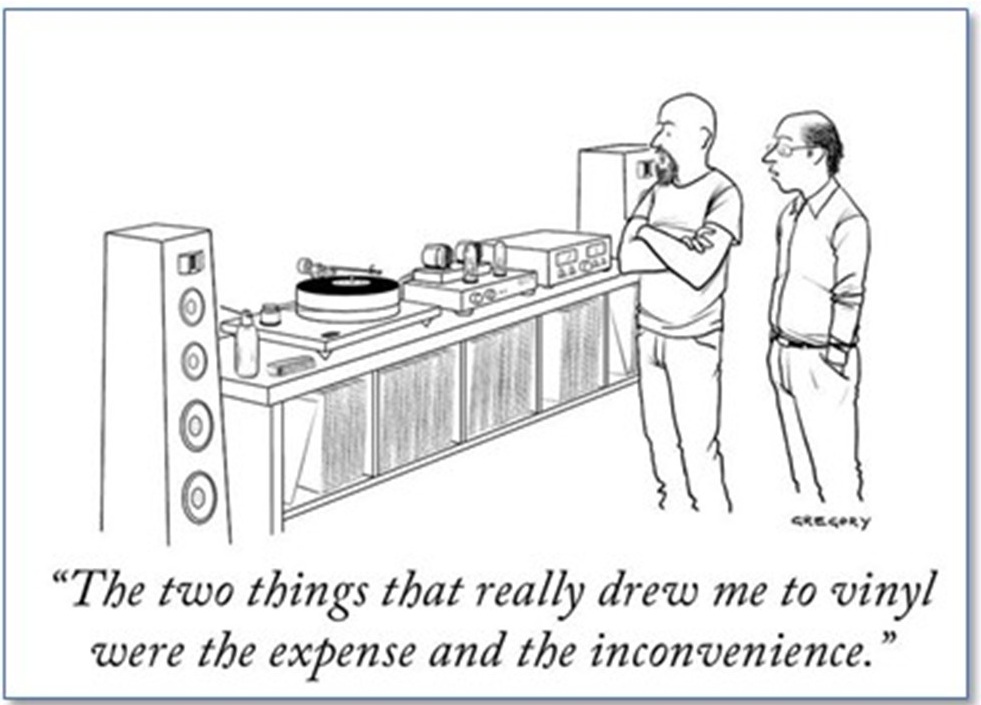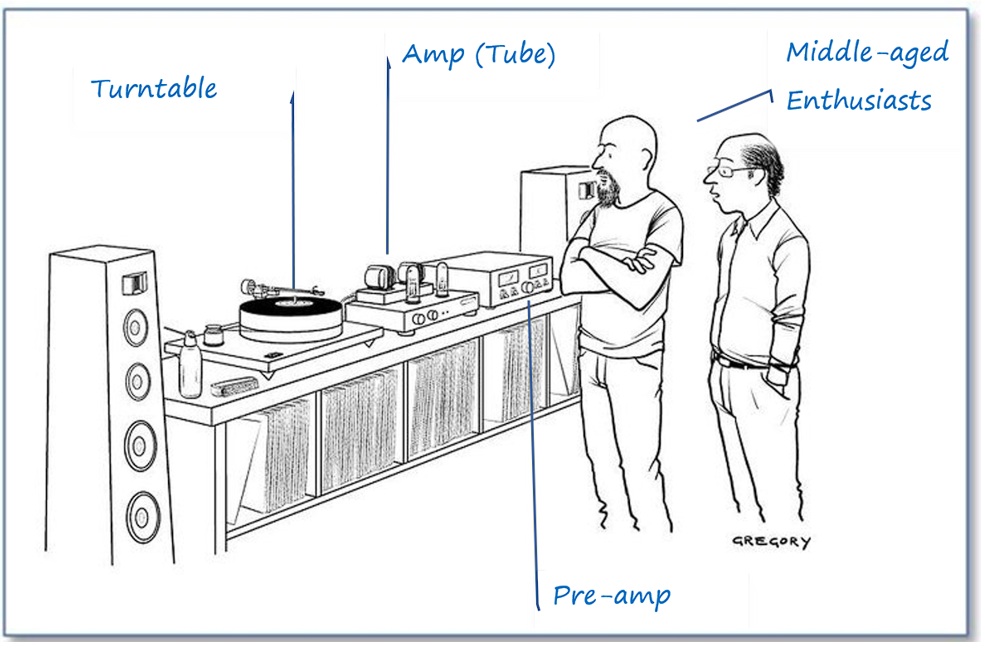
Your Journey into Vintage Audio - Where to Start
Most audiophiles would shriek with horror if they heard this, but I believe the best place to start is with aesthetics. Start by finding equipment that makes you feel good when you look at it. It’s a fun exercise, keeps you away from getting bogged down in technical details early on, and heightens the likelihood that you will be happy with your choices.
Once you determine the looks that appeal to you, you can narrow down choices based on resources here or other websites.>While you are looking, think about three other things:
- First, how much fiddling are you willing to invest in your vintage equipment? A sixty-year-old amplifier is no less likely to have problems that need attention than a sixty-year-old car. But just like cars, there are makes and models that are significantly better (or worse) than the average.
- Second, are you buying something to listen to and enjoy, an investment that you intend to turnover, or something in-between? You would have to work hard to lose money on any vintage audio investment held for a few years, but like cars, the most desirable models often increase the most. When viewed as an investment that you enjoy, it’s easier to swallow some of the prices that have climbed recently.
- Third, how much of your enjoyment will be related to having the “best,” “rarest,” or most highly desirable models? On the other extreme, how will you feel if your “low-end” Montgomery Wards’ system sounds great but gets looked down-upon by the enthusiasts among your friends? (Don’t think you have enthusiast friends? They seem to come out of the woodwork once they see one’s gear).

Why Start with Aesthetics?
Listening is only half of the experience with vintage equipment. All the senses become involved, especially with vinyl. Here are some questions about the individual components having to do with the way they look or feel (including ergonomics):
- Do you want big-box speakers, speakers that fade into the background, or ones that make a decorating statement themselves? Should they strongly reflect mid-century aesthetics the way the other components of the system probably will, or does that matter?
- Do you want separate components, like shown in the cartoon, an “all-in-one” receiver that combines the preamplifier, amplifier, and tuner into one? This is more a question of aesthetics than quality of sound. A system can sound great either way. There is also the option to get an integrated amplifier that combines the preamp and amp into one piece of equipment if you are not interested in radio.
- Do you want the glowing look, warm sound, and additional fussiness of tubes? Tube equipment is a little more effort simply because it is generally older than solid state gear.
- How much do you want to fiddle with your turntable? Most better turntables are “fully manual” meaning that you will place the record on the turntable and manually lift the arm and place it on the record. At the end of the side, the arm will remain in contact with the record, and you will lift it and replace it in the rest. A semi-automatic turntable will lift at the end of the record, and a fully automatic one will do all of this by itself. Of course with automation comes more complexity, and the simplest vintage table to keep running is a fully manual one. (By the way, not of these better turntables will stack records. It’s a no no.)
What About the Type of Music? Doesn’t that Matter?
Unless you want to own more than one system, it only matters in the extremes. You can separate systems into two groups, ones that are designed to be warm and ones that are designed to be highly dynamic and punchy. The former are better for soft rock, classical, vocals, jazz standards, etc. The latter do better with dynamic jazz, hard rock, disco, techno, etc.
Someone who wanted both (without compromise) would probably have a tube or early solid state system with 1960-70s speakers, and a later “power-wars” 1980s era solid state system pushing lots of watts into more modern speakers that need the power to really perform.
Someone who can live with a little compromise, (read that as “most normal people”), would be happy either way.
How Good is Good Enough?

There are four obvious components to this system (speakers, amplifier, pre-amplifier, and turntable), and one component that I continually see ignored in “audiophile” discussions. That component is the hearing quality of the listener.
A cheap system will make music sound bad. A “good” system will make it sound better. From there, you can spend as much as you want to make small differences that audiophiles swear they can hear. The goal of audio reproduction is for the system to become “transparent,” to completely disappear so that only the music remains. (Technically this is called a flat response that accurately recreates the dispersion of the sound waves as they were in the original performance.)
Tens of thousands can be spent on any one component of a system in an effort to make the response curve of the system be completely flat, or not emphasizing any one frequency of the music more than another. (There are other ways to degrade sound, such as a wobbly turntable, but right now let’s just focus on this one.)
However, most people’s hearing has degraded significantly by middle age, and continues to get worse. On average, middle-aged people will hear the bass of a recording as being 2-4 times louder than the higher notes. (This represents a 3db to 6db loss of hearing at the higher frequencies. Anyone reviewing speakers would be horrified if the speaker had this much variation—kind of ironic.) Does this mean that people with normal hearing loss cannot enjoy music? Not at all. But it does mean that if an audio reviewer is over 40 then you must seriously question it when they tell you that a $3000 set of RCA or speaker cables “significantly improves the smoothness of the horns.”
For most things that people buy, there is a huge improvement when you go from cheap to good, and sometimes an even bigger improvement when you go from good to better. From there on up you encounter diminishing returns.